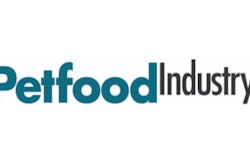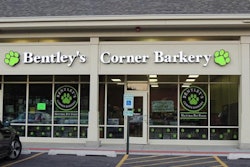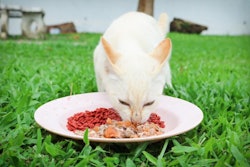
As the landscape of pet ownership shifts, the pet food industry is beginning to see a greater need for products that cater to smaller breeds. Millennials, often with less space and a desire for greater mobility, are turning to smaller pets to suit their lifestyles. Older pet owners, downsizing their living spaces and aiming for the ease of caring for smaller pets, are also a significant factor.
In fact, a Packaged Facts report published at the beginning of 2015 predicted the rise of small pets and its importance in the pet food market: “While the US dog population is growing, the size of the animals is smaller,” said a Petfood Industry analysis of the report in January 2015. “Packaged Facts' Pet Owner Survey indicates that a higher percentage of US households has small dogs (under 25 pounds) than medium dogs (25–40 pounds) or large dogs (40+ pounds), with the figures at 52 percent, 32 percent and 42 percent, respectively. The percentage of pet owners with small and large dogs increased slightly, while those with medium dogs held steady."
“Packaged Facts expects the shift to smaller dogs to continue in the years ahead, with the aging human population as a key driver,” said the analysis. “Further, the shift to smaller dogs could have numerous ramifications for the US pet market. Since smaller dogs eat less, pet food marketers may find it harder to increase volume sales. At the same time, size- and breed-specific foods could make up for that slack.”
By the numbers: small breed options and market trends
Toy and small breed dog food has seen sales growth of 73.5 percent in the US since 2011, according to global market research company GfK. This includes increases across dry, wet and treat categories as significantly more products become available on pet store shelves (see Figure 1). In 2011, the US market for small and toy breed food products was US$389 million. By mid-2016, the estimate was US$675 million, with 6.5 percent growth in the dry category, 8.1 percent growth in the wet category and 4.9 percent growth in the treats category, according to GfK.

FIGURE 1: There has been a significant increase in the growth of small-breed pet food options in the last several years, reflecting a consumer trend towards smaller pet ownership.
The trend can also be tracked through pet food packaging, which has seen an increase in consumer desire for smaller containers in both dog and cat food. Wet food in particular has exemplified this growth: while cans and tins still make up the majority of the segment for both dog and cat food, growth has been seen in smaller trays and pouches since 2011, according to GfK data — both in the new items appearing on store shelves (see Figure 2) and in dollar share (see Figure 3). Dog food trays saw 9 percent dollar share growth year-over-year from 2015 to 2016, while pouches grew 26 percent. On the cat side, trays saw 47 percent dollar share growth year-over-year, and pouches grew 23 percent. As far as new items are concerned, while in 2012 only 8 percent of new dog food items, and 6 percent of new cat food items came out in trays and pouches, by 2016 those numbers were up to 20 percent and 28 percent, respectively.
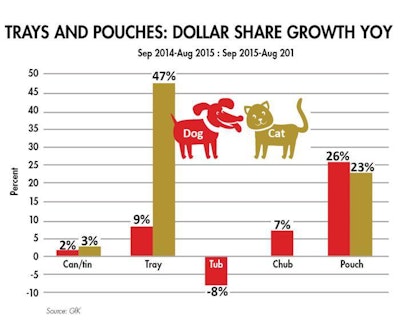
FIGURE 2: The percentage of new products on the shelves appearing in pouches and trays is another indicator that the pet food industry is already responding the small pet trend.
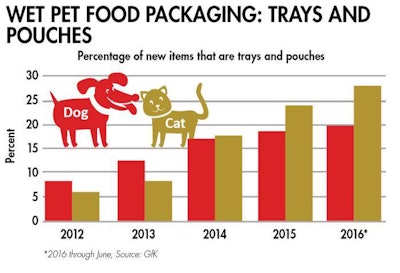
FIGURE 3: Trays and pouches, which provide more mobility and convenience for pet owners with smaller dogs or cats, have seen growth in the wet pet food segment.
The treat segment is seeing the same trend, according to GfK. Treat packages smaller than 16 ounces have grown in importance, while the 16–32 ounce and extra-large (greater than 64 ounce) packages have declined.
Global trends: small breed ownership on the rise
China is an excellent example of the rise of small breeds internationally. A more developing market, China’s pet owners are increasing as the country sees growth in urbanization and in its middle class. More disposable income (which has increased each year in China’s urban households since 2010) means more pets — and more money to spend on pet food. The growth in wealth is largely concentrated in cities, which means limited space for large animals. There is also a significant older population in China, including in the country’s two largest cities (Shanghai and Beijing), that owns pets, and they tend to aim for smaller breeds, as well.
In 2016, GfK reported that among China’s dog owners, small bags of dog food (less than 1 kg) were top sellers, representing 76 percent of all dog dry pet food sales. And the vast majority of cat wet food was sold in pouches, showing that the packaging trends growing in prominence in the US are alive and well in a country where smaller breeds are well established.
South Africa is another developing market showing the power of urbanization and small breed growth. Small and medium breeds are more popular than large breeds, which has led to a corresponding increase in purchases of small and medium breed-specific formulas, according to GfK data. The sale of small-breed formulas grew 2.6 percent from 2015 to 2016, while medium-breed formulas grew 5.8 percent. Large-breed formulas, by contrast, remained stagnant in sales (0 percent growth). Non-breed-specific formulas still hold the majority of the market (52.7 percent in 2016), but small-breed formulas (15.8 percent) and medium-breed formulas (10.5 percent) are gaining ground on the large-breed formula share, which was 21 percent in 2016, according to GfK.
Industry opportunity: breed-specific formulas and convenience packaging
As the trend of smaller dogs and cats continues to gain ground in both the US and in more developing markets, pet food producers looking to expand into new markets or tweak their formulas might look to creating breed-specific options that cater to small and toy pets. In addition, packaging options that run to smaller sizes would be a good way to cater to small pet owners who don’t necessarily look for something breed specific, but do want the convenience and practicality of having food bag (or pouch, or tray) options more suited to their pets’ sizes.
Whatever the avenue, consumer demographics (including age, lifestyle and place of residence) will continue to play the primary role in pet ownership trends, which in turn will continue to affect the pet food industry’s many directions for the foreseeable future.
More pet food market trends



